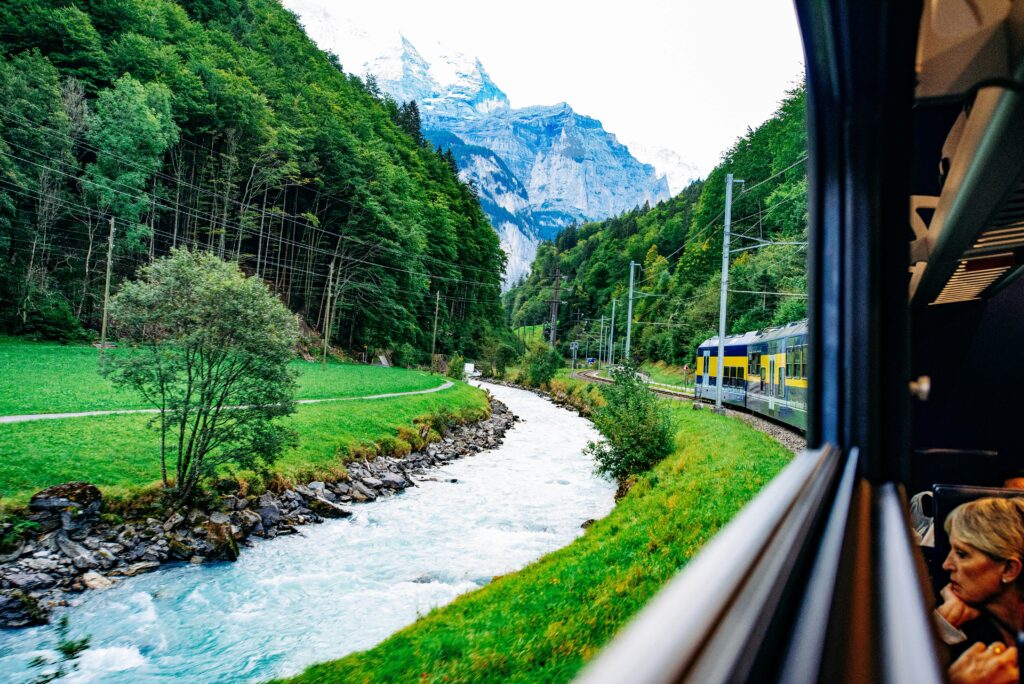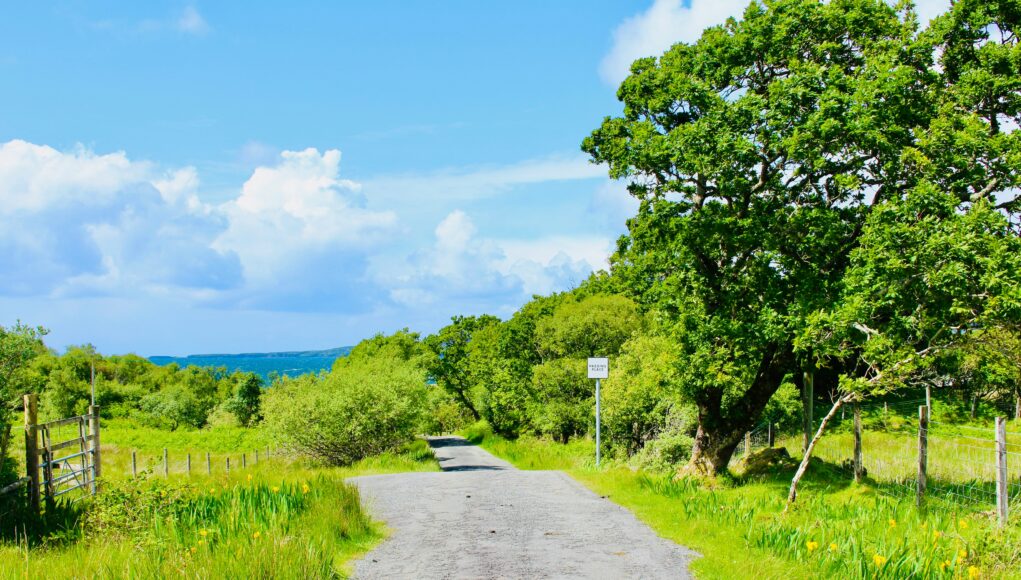Traveling doesn’t have to come at the expense of our planet.
With growing awareness about climate change and environmental impact, more travelers are seeking ways to explore the world responsibly. Sustainable tourism isn’t just a trend—it’s a necessary shift toward preserving the destinations we love for future generations.
Whether you’re planning a weekend getaway or a month-long adventure, these ten green vacation ideas will help you reduce your carbon footprint while creating unforgettable memories. From choosing eco-friendly accommodations to supporting local communities, every small decision contributes to a more sustainable future for travel.
1. Choose Eco-Certified Accommodations

Start your green vacation by selecting accommodations that prioritize sustainability. Look for hotels, lodges, and resorts with recognized eco-certifications such as LEED, Green Key, or EarthCheck. These properties implement practices like renewable energy usage, water conservation systems, waste reduction programs, and locally-sourced materials.
Many eco-certified accommodations go beyond basic environmental practices by supporting local communities, protecting wildlife habitats, and educating guests about conservation efforts. Some even offer carbon-neutral stays or allow you to offset your environmental impact through on-site conservation projects.
2. Embrace Slow Travel

Instead of rushing through multiple destinations, embrace the concept of slow travel. Stay longer in fewer places to reduce transportation emissions and deepen your connection with local cultures. This approach allows you to truly immerse yourself in a destination, build meaningful relationships with locals, and discover hidden gems that hurried tourists often miss.
Slow travel also means choosing overland transportation when possible. Trains, buses, and even road trips generate significantly fewer emissions per person than flights. Plus, ground transportation offers scenic routes and spontaneous discoveries that make the journey part of the adventure.
3. Support Local and Sustainable Food

Food choices significantly impact your vacation’s environmental footprint. Seek out restaurants that source ingredients locally and seasonally, reducing transportation emissions and supporting regional farmers. Visit farmers’ markets, join cooking classes using local ingredients, or book farm-to-table dining experiences.
Consider reducing meat consumption during your travels, as livestock farming has a substantial environmental impact. Many destinations offer incredible plant-based cuisine that reflects local culinary traditions. This dietary shift can also lead to discovering new flavors and cooking techniques you might not encounter otherwise.
4. Pack Light and Smart

Lighter luggage means reduced fuel consumption for transportation. Pack versatile clothing that can be mixed, matched, and layered for different weather conditions and occasions. Choose quality items that won’t need replacing during longer trips.
Bring reusable items to minimize waste: water bottles, shopping bags, utensils, and toiletry containers. Pack solid toiletries or refillable containers to avoid single-use plastics. Many destinations now offer refill stations for water and common toiletries, making it easier than ever to travel plastic-free.
Essential Eco-Friendly Packing Items:
- Reusable water bottle with filtration system
- Collapsible shopping bags
- Bamboo or metal utensil set
- Solid shampoo and soap bars
- Quick-dry, versatile clothing
- Portable solar charger for electronics
5. Choose Active and Nature-Based Activities
Opt for activities that have minimal environmental impact while connecting you with nature. Hiking, cycling, kayaking, and wildlife watching require no fuel and leave no trace when done responsibly. These activities also provide excellent exercise and mental health benefits.
Many destinations offer guided eco-tours led by local naturalists who can teach you about regional ecosystems, conservation efforts, and sustainable practices. These experiences often contribute directly to conservation funding and provide income for local communities.
6. Use Public Transportation and Alternative Mobility
Explore destinations using public transportation, bike sharing programs, or walking. Most cities offer comprehensive public transit systems that are not only environmentally friendly but also provide authentic local experiences. You’ll see neighborhoods and interact with residents in ways that private transportation doesn’t allow.
For longer distances within a destination, consider electric vehicle rentals or hybrid options. Many rental companies now offer eco-friendly vehicle choices, and some destinations have extensive electric vehicle charging networks.
7. Participate in Conservation Tourism
Turn your vacation into a meaningful contribution to environmental protection by participating in conservation tourism. Many organizations offer programs where travelers can help with wildlife research, habitat restoration, or marine conservation efforts.
These experiences might include sea turtle monitoring, coral reef restoration, reforestation projects, or wildlife tracking. Not only do you contribute to important conservation work, but you also gain deep insights into environmental challenges and solutions while making your trip truly impactful.
8. Choose Destinations Committed to Sustainability
Some destinations have made significant commitments to sustainable tourism and environmental protection. Countries like Costa Rica, Bhutan, and New Zealand have implemented policies to protect their natural resources while promoting responsible tourism.
Research destinations that invest in renewable energy, protect large percentages of their land as national parks, and have strong environmental regulations. These places often offer incredible natural experiences while ensuring your tourism dollars support conservation efforts.
9. Minimize Water and Energy Usage
Be mindful of water and energy consumption during your travels, especially in water-scarce regions or areas where electricity comes from non-renewable sources. Take shorter showers, reuse towels, turn off lights and air conditioning when leaving your room, and report any leaks or inefficiencies to hotel staff.
In many destinations, water is a precious resource. Avoid activities that waste water unnecessarily, and consider bringing water purification tablets or a UV sterilizer to safely drink local water rather than purchasing bottled water.
10. Offset Your Carbon Footprint
While reducing emissions should be your primary goal, offsetting remaining carbon emissions can help neutralize your vacation’s environmental impact. Choose reputable carbon offset programs that fund verified projects like reforestation, renewable energy development, or methane capture.
Calculate your trip’s carbon footprint using online calculators that account for transportation, accommodation, and activities. Many airlines and booking platforms now offer integrated carbon offset options, making it easy to offset your travel emissions at the time of booking.
Tips for Choosing Quality Carbon Offsets:
- Look for third-party verified projects (Gold Standard, Verified Carbon Standard)
- Choose projects with additional environmental or social benefits
- Prefer projects in the regions you’re visiting when possible
- Consider supporting long-term projects over short-term fixes
Making Every Trip Count
Sustainable travel isn’t about sacrificing comfort or adventure—it’s about making conscious choices that protect the places we love to visit. By implementing these green vacation ideas, you can reduce your environmental impact while often saving money and having more authentic, meaningful travel experiences.
Remember that sustainable travel is a journey, not a destination. Start with one or two practices that feel manageable, and gradually incorporate more as they become habits. Every small action contributes to a larger movement toward responsible tourism that benefits both travelers and the incredible destinations we’re privileged to explore.
The future of travel depends on our collective commitment to protecting the planet’s natural and cultural treasures. By choosing green vacation options, you’re not just reducing your footprint—you’re supporting a travel industry that prioritizes environmental protection and community well-being for generations to come.
Frequently Asked Questions About Green Travel
Q: Is sustainable travel more expensive than traditional travel?
A: Not necessarily. While some eco-certified accommodations may have premium pricing, many sustainable travel practices actually save money. Staying longer in fewer places reduces transportation costs, eating local food is often cheaper than tourist restaurants, using public transport saves on rental cars, and packing light can reduce baggage fees. The key is planning ahead and making smart choices.
Q: How do I find truly sustainable accommodations and avoid greenwashing?
A: Look for third-party certifications like LEED, Green Key, EarthCheck, or Rainforest Alliance. Read detailed descriptions of their sustainability practices, check recent guest reviews mentioning environmental efforts, and research the property’s specific initiatives. Genuine eco-friendly properties will provide detailed information about their conservation efforts, energy sources, and community involvement.
Q: Can I still fly and call my trip sustainable?
A: Flying does have a significant carbon footprint, but you can minimize impact by choosing direct flights (which use less fuel), flying economy class (more efficient per passenger), staying longer to justify the emissions, and purchasing high-quality carbon offsets. For shorter distances under 500 miles, consider trains or buses as alternatives.
Q: What’s the most effective way to offset my travel carbon footprint?
A: Choose verified offset programs that fund additional projects (not those that would happen anyway). Look for certifications like Gold Standard or Verified Carbon Standard. Forest-based projects, renewable energy development, and methane capture programs are generally effective. Calculate your emissions using reputable calculators and offset slightly more than calculated to account for uncertainties.
Q: How can I be a responsible tourist when visiting sensitive environments?
A: Follow Leave No Trace principles: stay on designated trails, don’t disturb wildlife, pack out all trash, respect local customs and protected areas. Choose tour operators that limit group sizes, employ local guides, and contribute to conservation efforts. Be mindful of your impact on fragile ecosystems and always prioritize preservation over the perfect photo.
Q: What should I do if sustainable options aren’t available at my destination?
A: Focus on what you can control: pack reusable items, minimize waste, use public transportation, eat local food, conserve water and energy, and support local businesses. Even in destinations with limited green infrastructure, your individual choices can significantly reduce your impact. Research ahead of time and bring sustainable alternatives when local options aren’t available.
Q: How do I know if my carbon offset purchase is legitimate?
A: Legitimate offset programs provide detailed project information, third-party verification, clear timelines, and transparent monitoring reports. Avoid programs that seem too cheap, don’t provide project details, or promise unrealistic results. Reputable offset providers include Cool Effect, Carbonfund.org, and programs certified by Gold Standard or Verra.
Q: Is it better to visit popular destinations or off-the-beaten-path locations for sustainability?
A: Both can be sustainable depending on how you travel. Popular destinations often have better sustainable infrastructure but may suffer from overtourism. Lesser-known destinations might be more fragile but benefit more from tourism revenue. The key is traveling responsibly regardless of destination popularity: respect carrying capacity, support local communities, and choose operators committed to sustainability.
References and Sources
Key Organizations and Resources:
- Global Sustainable Tourism Council (GSTC) – International standards for sustainable travel and tourism
- UN World Tourism Organization (UNWTO) – Global tourism statistics and sustainable development guidelines
- Center for Responsible Travel (CREST) – Research and education on responsible tourism practices
- International Ecotourism Society – Guidelines and certification for ecotourism operators
- Tourism Concern – Advocacy organization for ethical and fair tourism
Environmental Impact Studies and Data:
- IPCC Reports on Climate Change – Transportation and tourism emission data
- Journal of Sustainable Tourism – Peer-reviewed research on sustainable travel practices
- Carbon Trust – Carbon footprint calculation methodologies and offset verification
- World Wildlife Fund (WWF) – Tourism impact on natural habitats and conservation
- European Environment Agency – Transportation emission factors and environmental data
Certification and Standards Organizations:
- Verified Carbon Standard (Verra) – Carbon credit verification program
- Green Key – Eco-label for tourism accommodations and attractions
- EarthCheck – Environmental certification for travel and tourism
- LEED (Leadership in Energy and Environmental Design) – Green building certification
- Rainforest Alliance – Sustainable tourism certification program
- Gold Standard – Carbon offset project verification and certification

















